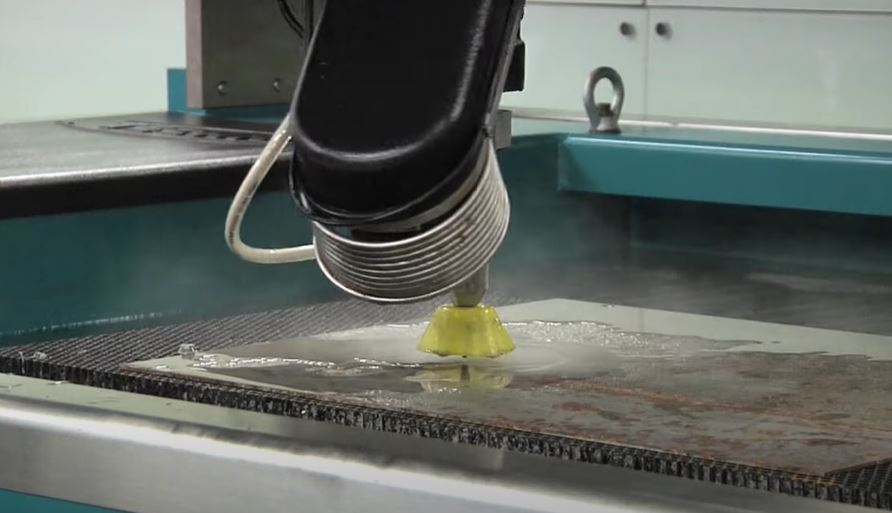According to various water jet machine manufacturers, many people are a bit confused when it comes to choosing between waterjet, plasma and laser. Laser is reputed for its high level of precision as opposed to plasma and waterjet, but a waterjet system is more energy efficient when used to work on aluminum sheets and steel.

Each of the above mentioned material cutting systems makes use of a different material for them to cut through an object, and with that they also come with their own array advantages and disadvantages. So, truly this can be considered as a major decision considering the factors to look into; the system efficiency, running costs, initial outlay, your bottom line impact and finally, the staff impact.
Giving each of these methods a close-up look will help us gain more insight regarding the general benefits they offer, as well as the possible drawback that they have. Hence, you are able to make an informed choice. Carry on reading the rest of this content, and you’ll find out later which cutting system is best suited for your needs.
Water Jet Machine Manufacturers Defining Waterjet Technology
Waterjet material cutting method is a qualified cold cutting process. This cutting system is making use of a specialized tool or device together with the stream of an ultra high-pressure water. In order to further intensify its cutting potency, the water itself can be mixed with an abrasive mineral substance with respect on the material you are intending to cut through.
Things It Can Cut
Basically, waterjet cutting Melbourne can handle cutting through almost anything; titanium, stainless steel, tool steel, aluminum, granite, ceramics, armour plate and a range of materials known sensitive to high temperatures. You can make it cut out an object to almost any imaginable shape and form you want it to with high level of precision with a burr-free edge.
Plasma Cutting
Plasma cutting systems can be taken advantage of when handling projects that involve cutting of metals such as aluminum, copper, and stainless steel, regardless if they are ferrous or nonferrous metals. The only exception, so far, with this material cutting system is wood and plastic. You can never cut materials of these types with a plasma cutter. But compared to laser cutting systems, plasma is much faster in terms of cutting speed for over 3mm thickness.
There is one minor drawback with the plasma cutting system, though. Typically, it will leave 4-6 degree bevel on the edge cut. This can be easily noticed on thicker pieces.
Laser Cutting
When all that you care about is accuracy and efficiency, laser cutting systems got you covered on that. These pieces of equipment require a very minimal amount of human intervention. Usually human hands may be required only for inspections, repairs, and programming parts.
It is very scarce that accidents and injuries happen when there is an ongoing laser cutting job. However, getting too close or being in direct contact to the laser itself will result in burns – one can never be too careful on this.
It is not the laser cutting machine that requires only minimal human intervention, mainly for programming, inspections and repairs. Therefore, the frequency of injuries and accidents is minimal, although too close contact with the laser can cause burns. Laser cutting of materials such as plastics can cause gas emissions when exposed to heat, which means that a well-ventilated room is vital as the gases can be harmful and toxic.
Laser cutting systems are not highly recommended when processing/cutting plastic-based materials. Doing so runs the risk of creating noxious gas emissions and fumes when they are exposed to extreme heat. If ever you need to do so, you need to carry it out in a well-ventilated space or room. Or better yet, do it in an open space area to minimize the risk of inhaling possible toxic gases that it will produce.
Our Takeaway on Waterjet Cutting
From the very mouth of water jet machine manufacturers themselves, they often say that the type of material subject for cutting will have a direct influence on the amount of power that it will likely consume.
But to give you an idea here, a 1500-watt laser cutter will require 20-40 kw electrical power, a 300 amp plasma cutting machine would require 55 kw electrical power whereas a waterjet system would be needing only 22-35 kw.
